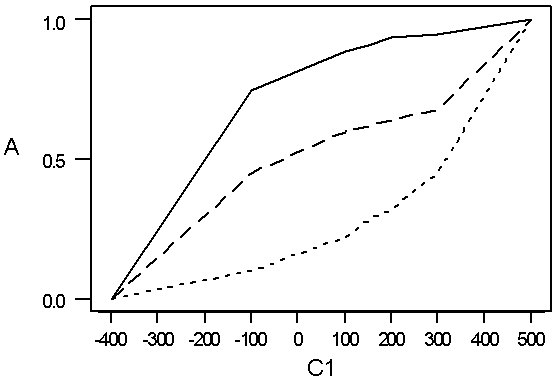hree decision makers have assessed utilities for the problem whose payoff table appears below.


a. Plot the utility function for each decision maker.
b. Characterize each decision maker's attitude toward risk.
c. Which decision will each person prefer?
a. 
b. Person A is a risk avoider, Person B is fairly risk neutral, and Person C is a risk avoider.
c. For person A, EU(d1) = 0.734 EU(d2) = 0.912 EU(d3) = 0.904
For person B, EU(d1) = 0.56 EU(d2) = 0.62 EU(d3) = 0.61
For person C, EU(d1) = 0.332 EU(d2) = 0.276 EU(d3) = 0.302
Decision 1 would be chosen by person C. Decision 2 would be chosen by persons A and B.
You might also like to view...
The most common method of direct-marketing is:
A) direct mail B) telemarketing C) direct response mass media D) e-mails
Which of the following is not a true statement about print communication?
A) It is considered official and formal. B) Its use is declining. C) Some companies no longer use it for internal communication. D) It is still used for individual pay or benefit information. E) It is not appropriate for job applications.
An Anton Piller order
A) is a surprise search warrant in a civil action B) states the defendant must not move its assets out of the jurisdiction C) states the defendant must pay damages D) rectifies a mistake in a contract E) prevents a party from disclosing the contents of a settlement agreement
Violations of antitrust law are either per se violations or rule of reason violations. What are the differences between these two types of violations? Give examples of each